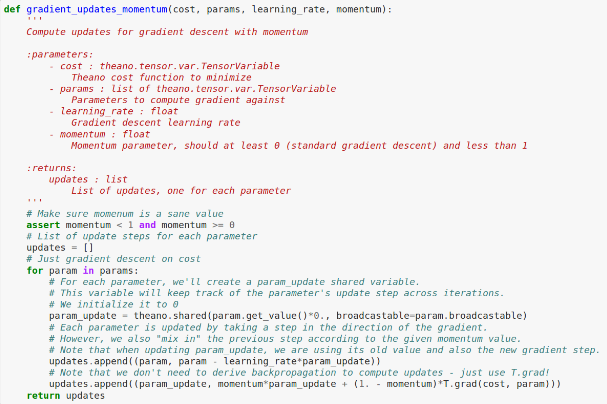This document comes from Keras Documentation.
You have just found Keras.
Keras is a high-level neural networks API, written in Python and capable of running on top of either TensorFlow or Theano. It was developed with a focus on enabling fast experimentation. Being able to go from idea to result with the least possible delay is key to doing good research.
Use Keras if you need a deep learning library that:
- Allows for easy and fast prototyping (through user friendliness, modularity, and extensibility).
- Supports both convolutional networks and recurrent networks, as well as combinations of the two.
- Runs seamlessly on CPU and GPU.
Read the documentation at Keras.io.
Keras is compatible with: Python 2.7-3.5.
Source for picture: click here
Guiding principles
- User friendliness. Keras is an API designed for human beings, not machines. It puts user experience front and center. Keras follows best practices for reducing cognitive load: it offers consistent & simple APIs, it minimizes the number of user actions required for common use cases, and it provides clear and actionable feedback upon user error.
-
Modularity. A model is understood as a sequence or a graph of standalone, fully-configurable modules that can be plugged together with as little restrictions as possible. In particular, neural layers, cost functions, optimizers, initialization schemes, activation functions, regularization schemes are all standalone modules that you can combine to create new models.
-
Easy extensibility. New modules are simple to add (as new classes and functions), and existing modules provide ample examples. To be able to easily create new modules allows for total expressiveness, making Keras suitable for advanced research.
-
Work with Python. No separate models configuration files in a declarative format. Models are described in Python code, which is compact, easier to debug, and allows for ease of extensibility.
Getting started: 30 seconds to Keras
The core data structure of Keras is a model, a way to organize layers. The simplest type of model is the Sequentialmodel, a linear stack of layers. For more complex architectures, you should use the Keras functional API, which allows to build arbitrary graphs of layers.
Here is the Sequential model:

Stacking layers is as easy as .add():

Once your model looks good, configure its learning process with .compile():

If you need to, you can further configure your optimizer. A core principle of Keras is to make things reasonably simple, while allowing the user to be fully in control when they need to (the ultimate control being the easy extensibility of the source code).

You can now iterate on your training data in batches:

Alternatively, you can feed batches to your model manually:

Evaluate your performance in one line:

Building a question answering system, an image classification model, a Neural Turing Machine, or any other model is just as fast. The ideas behind deep learning are simple, so why should their implementation be painful?
For a more in-depth tutorial about Keras, you can check out:
In the examples folder of the repository, you will find more advanced models: question-answering with memory networks, text generation with stacked LSTMs, etc.
What you will find in the full document:
- Getting started
- Models
- Layers
- Preprocessing
To check out all this information, click here.
DSC Resources
- Services: Hire a Data Scientist | Search DSC | Classifieds | Find a Job
- Contributors: Post a Blog | Ask a Question
- Follow us: @DataScienceCtrl | @AnalyticBridge
Popular Articles

